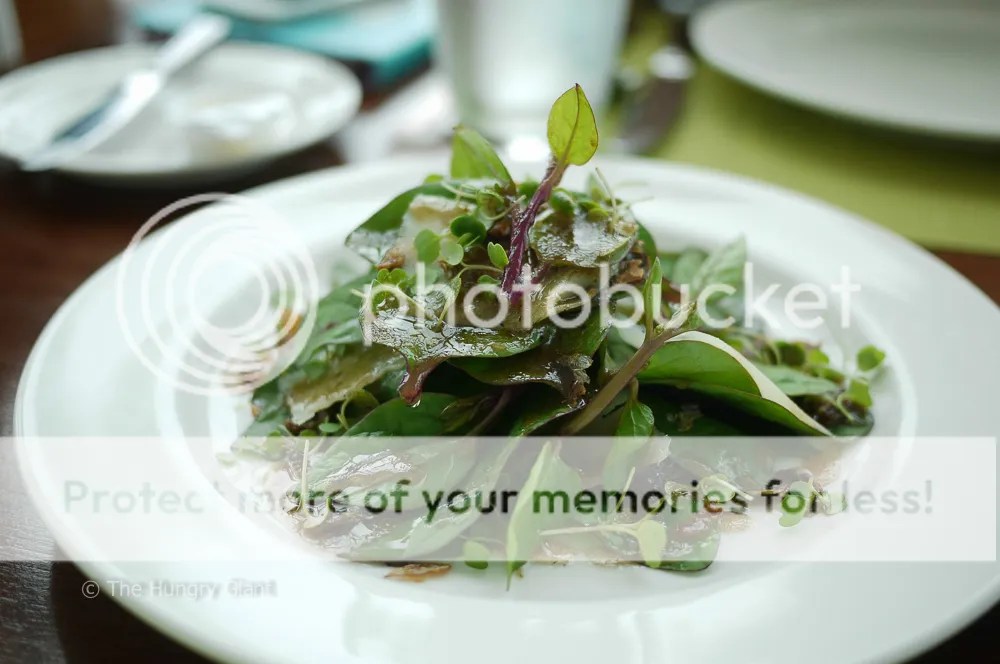I looked out and admired the view. It’s not exactly breathtaking to appraise traffic like it was a long congested line of ants. I tilted my head upwards just a little bit so the concrete jungle is obscured. There were birds and the sky was clear. Now that was a sight.
Then I had a feeling at the pit of my stomach. I could feel the movement of the platform at the fringes of the restaurant. So it does move. It’s not really jarring, but I was queasy to begin with so it took me a while to get used to the movement. At that time of my first visit, it took two hours to complete one revolution. The revolution at the time of my second visit was faster by thirty minutes.

That’s the first thing you notice at 100, the restaurant with iconic Chef Jessie Sincioco at the helm. She has a flair for grandiosity. The space is easy on the eyes as well. The menu is refined, but strangely enough it’s not as uptight as I thought it was going to be.


And they make good bread. Really good bread.

Between the kesong puti salad and the alugbati (which uses fresh, not blanched nightshade), the uncomplicated and familiar flavors of the former drew me in.


It was a good “caprese” salad, but when the ceasar came out, that was my favorite. It had prawn popcorn, bacon bits over hearts of romaine. It was a good start.

The dragon maki was hefty enough to be a meal in itself with its shrimp tempura on the inside, and then sprinkled with tempura bits and rich mayonnaise. I’m still learning to use chopsticks properly, and if you see me wield it you’ll notice my hand trembles. But for this maki I’ll brave the tremors.



The vegetable maki was a surprise! I did not expect that I would enjoy it as well. It’s a notch lower in taste compared to its prawn counterpart, but I still appreciated it.
This sea bass is incredibly delicious. For the price, is it worth the trouble? I’d say yes. It’s drenched in a savory and sweet miso base and gives way to perfectly cooked flesh that holds it shape but it’s still very tender. Yes and yes.


There’s also shrimp curry and beef roulade, but the seafood gambas is stellar. A medley of fruits of the sea drenched in punchy tomato sauce fits the bill of a good plate of ingredients cooked with respect.



But the others aren’t rubbish at all! I fact, almost everything that was served to us was great. I’d just like to single out a few things that really stood out.
And I could sing songs about Chef Jessie’s desserts.

But it’s in a moment of silence that my real appreciation creeps in. I close my eyes and just marvel at how I love a good dessert. In this case, I loved almost everything that was served.
It’s this souffle that made me smile the most. How can something be so light yet so rich? This is a soaring tribute to all things good in life. I am not exaggerating.


One of my guilty pleasures is peanut butter. But I don’t really enjoy cheesecakes that much anymore because it’s like I’m falling into a pit of heavy flavours that never really take off. With peanut butter however, I can make an exception.

The revolving tortas are little dense cakes filled with flavoured cream and topped with fruit. At this point I was already coming down from a souffle high but I still made room for this.

For some strange reason souffle isn’t on your mind, this works. There’s also a delicious chocolate caramel cake that works for lovers of chocolate, but competing for attention against the souffle and tortas is hard.
100 is a posh gem. I’d like to believe you pay not just for the elegant (but also uncomplicated) food but for the great view as well. Who wouldn’t feel good dining with Manila’s shifting skyline as the backdrop?
Right now there are two reasons that compel me to go back: a chance to dine at night, to appreciate pinpricks of light all over the horizon and of course, the souffles. I love their souffles.
100 Revolving Restaurant 33rd Floor, MDC 100 Building, C5 corner Eastwood Drive, Quezon City +632 962-1016
















































